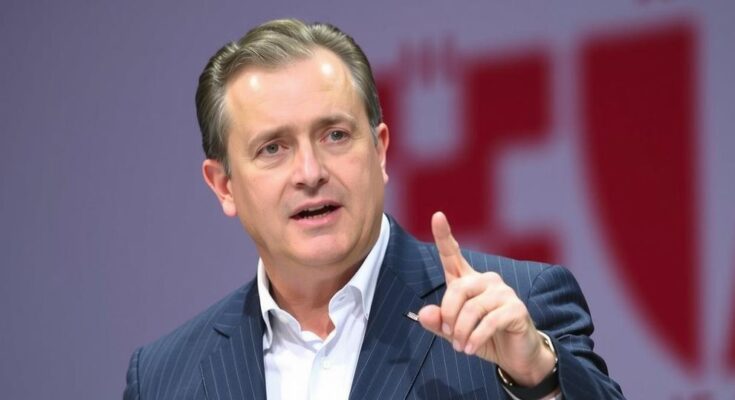In the initial round of Croatia’s presidential election, incumbent Zoran Milanović received 49.1% of the votes, while challenger Dragan Primorac garnered 19.35%. With no majority winner, a second round is scheduled for 12 January. Milanović aims for collaboration amid political tensions, as concerns about governance and corruption linger in the nation.
In the first round of Croatia’s presidential election held on 29 December, incumbent President Zoran Milanović secured the highest number of votes, garnering 49.1%, yet fell short of an outright majority. This result necessitates a second round of voting, set for 12 January, where he will face off against Dragan Primorac, the candidate from the ruling Croatian Democratic Union, who received 19.35%. Independent candidate Marija Selak Raspudić follows in third place with 9.25%.
The presidency in Croatia is largely a ceremonial role with limited powers, primarily in matters of foreign policy and security. Milanović, a known critic of the current government, expressed a desire to collaborate with them during what he described as a period of uncertainty. “I will fight for a Croatia with attitude … a Croatia which cares about its interests,” he remarked to his supporters. Following his election, he has frequently clashed with Prime Minister Andrej Plenković on various policy matters, particularly criticizing the European Union and NATO for their approach to the conflict in Ukraine.
Out of an eligible voter base of approximately 3.8 million, the voter turnout for the first round was reported at 46%. Meanwhile, Primorac expressed optimism about attracting votes from right-wing factions for the second round, emphasizing a platform that prioritizes the youth and pensioners as well as national unity in his campaign. Despite the political landscape being dominated by HDZ, Milanović is viewed by many as a necessary counterbalance to the government, particularly in light of numerous corruption allegations involving ministers.
The electoral process reflects significant political tensions and public sentiments regarding governance in Croatia, with citizens actively participating in shaping their leadership’s future.
The presidential office in Croatia plays a significant role in shaping national policy, despite its largely ceremonial nature. The tension between incumbent President Zoran Milanović and Prime Minister Andrej Plenković highlights broader conflicts within Croatian politics, particularly regarding governance and foreign policy decisions. The divided electorate, represented by a range of candidates from different political affiliations, points to ongoing challenges and an evolving political landscape in Croatia, especially as issues like corruption and public dissatisfaction persist.
In conclusion, the first round of the Croatian presidential election has set the stage for a competitive second round, with incumbent Zoran Milanović aiming to consolidate his position against challenger Dragan Primorac. Voter sentiments reflect a desire for change amid political instability, with Milanović positioning himself as a critical voice against the ruling government while Primorac seeks to unite right-leaning voters. The outcomes of these elections will likely have broader implications for Croatia’s political climate moving forward.
Original Source: www.euractiv.com




